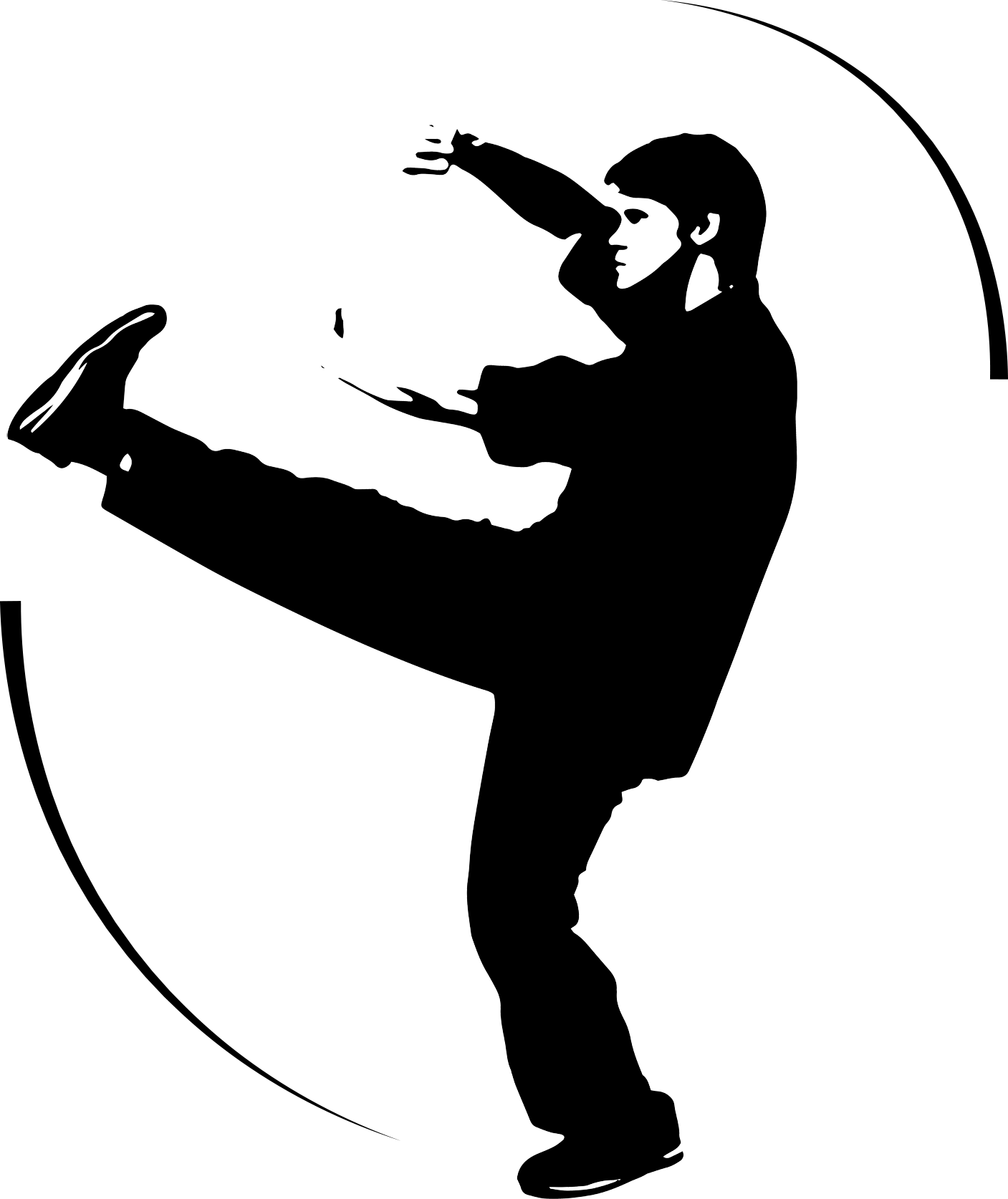
The two men face each other across a path. It is one man’s assignment to guard the path, the other’s assignment to take it. They maneuver, each seeking an opening in the other’s defenses. The man guarding the path is holding a spear, known among the Chinese as the “King of Weapons”. The other holds a broadsword, known among the Chinese as the “Tiger of Weapons”.
Suddenly the spear shoots out. It fires with amazing rapidity, three times in succession; each time precisely to a different point, a different level, a different target on his opponent. The sword wielding man angles his weapon, twice deflecting the point of the spear. On the third he leaps, whipping the sword around himself, both deflecting the spear and closing. In an instant his motion continues into a horizontal slash at his opponent, but the spearman has already leaped away, reestablishing his protective distance.
In Kung-Fu we often study the weapons of the past. Why? Why would one put such considerable effort into training with a weapon no longer practical in today’s world?
The reasons are many. For one, it the study of a weapon challenges one’s Kung-Fu like few other things can. The Kung-Fu practitioner learns to move with an ease and coordination unknown to most people. A weapon presents special challenges to this ability. Each weapon requires that one learn to manipulate it precisely, if one is to be effective. This means learning new movement skills to achieve agility, accuracy and economy of motion. The ability to adjust one’s balance and coordination to whatever one has at hand is an elevation of skill few martial artists possess.
Secondly, weapons require that one learn to transmit one’s Jing, or trained force, through the weapon. This means one must be able to utilize this force in new and unfamiliar ways. When one can effectively send Jing through an object such as a pole arm or sword, creating force through only one’s limbs becomes a simple matter.
Third, using a weapon against others forces the practitioner to think in new tactical terms. Who has the advantage in reach? Which weapon is faster or more powerful? How much impact can one weapon take? For example, the broadsword or Dao can take considerable impact with little impairment of its effectiveness whereas the straight sword or Jian will shatter on heavy impact. Weapons provide the Kung-Fu student with new venues wherein to sharpen his tactical acumen.
Lastly, when one trains with a classical weapon, it develops the body of the practitioner in unique ways. Each makes new demands of the muscles, tendons and skeletal structure. In response to the challenges these structures strengthen to a far greater degree than can be achieved by empty hand practice alone. In this way, weapons training makes the empty hand practice even more powerful. This physical change is what makes one more than one who, for example, trains with the sword; it transforms him into a swordsman.
When explored in depth a weapon is nearly as complex as another style of Kung-Fu. Every weapon has its own keywords or guiding principles. There are often multiple sets associated with a weapon; encompassing a different aspect of its employment. To master a weapon is like learning another language; the Kung-Fu practitioner can express himself through it in ways that were not possible before.
Weapons have their own history and traditions. There are often past masters of a specific weapon whose stories can inspire or instruct. In the end, the Kung-Fu practitioner, through his diligence, becomes a part of the history of a weapon as its present day representative.
At Authentic Kung-Fu, Fort Worth, we study weapons in detail. We train in a weapon’s techniques and theories. With bladed weapons we practice actually cutting targets. We learn strategies and then employ those concepts against other weapons even as was once done in the now-distant past. From weapons training we gain heightened abilities and with it a profound appreciation for those who saw fit to preserve these arts for our generation. It is our sincere intent to continue this tradition.

Recent Comments